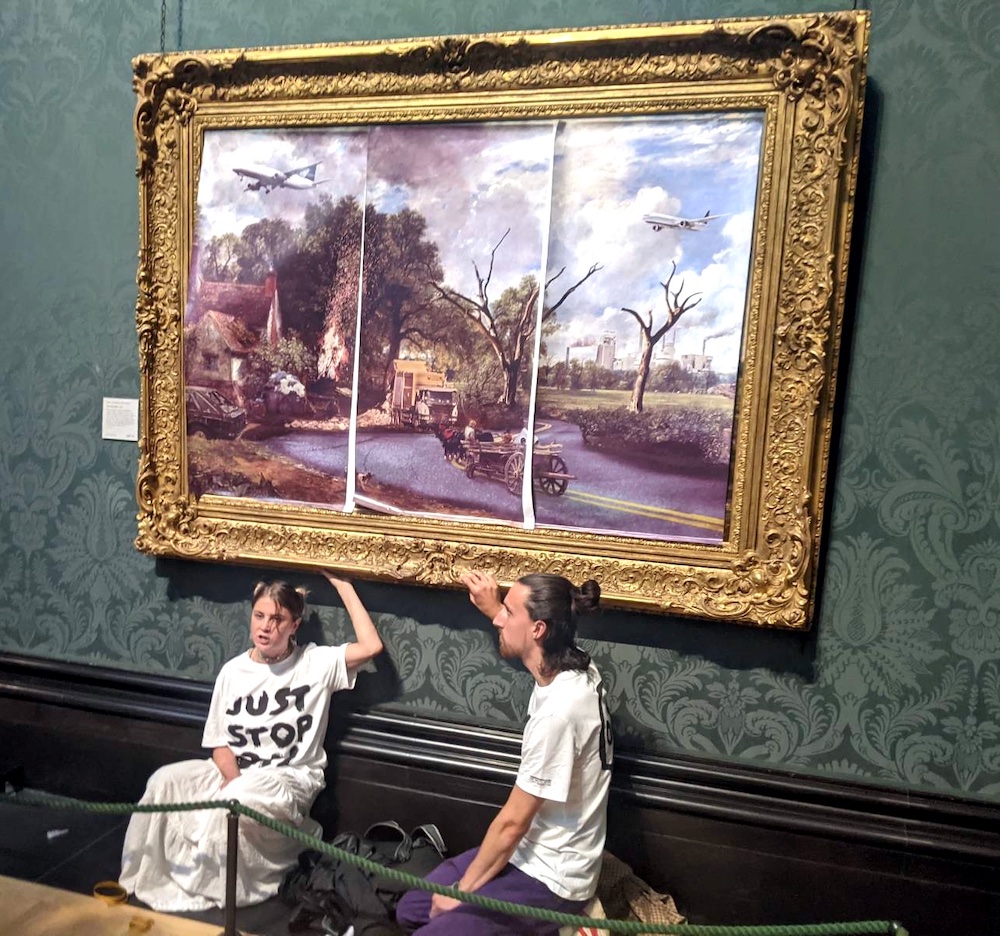A bomb explodes in one of the Met’s galleries leaving 13-year-old Theo motherless in the harrowing opening of Donna Tartt’s 2013 bestselling novel, The Goldfinch. In the wake of the explosion, caused by an apparent terrorist attack, a mysterious survivor prompts Theo to steal Dutch 17th-century artist Carel Fabritius’ painting of the small colorful bird, setting off Tartt’s convoluted Dickensian plot. Ever since reading the novel and viewing the film depicting swirling billows of dust and debris inside the Met’s Dutch galleries, I have been concerned that such an attack could easily happen at almost any American art museum.
Recently, on a visit to MOCA on Grand Avenue, my ladyfriend asked if she could check her overstuffed handbag, and was told the museum does not check in items, causing her the discomfort of lugging her bag around the galleries. I was horrified by the prospect that visitors could conceal virtually any kind of weapon or substance in their handbag or backpack.
I spoke to the director of a major Los Angeles art museum who rebuffed my suggestion that magnetometers be placed at entrances to museums and visitors’ bags should be searched, claiming it was not worth the “inconvenience” or the expense. It seems almost inevitable that some tragedy will occur at an art institution given the substitution of young “visitor assistants,” many of them art students, for experienced security personnel at numerous museums in recent years.
Hapless “security guards” have proved to be no better than mere bystanders at deterring the defilement of art masterworks by climate change activists during 2022 at numerous European art institutions. The climate protestors have flung everything from mashed potatoes to tomato soup at such masterworks as Monet’s Haystacks at the Museum Barbarini in Germany and van Gogh’s Sunflowers at London’s National Gallery. Fortunately, the only thing preventing damage to the paintings has been the panes of glass protecting them. Some protestors have also recited speeches and slogans which have gone viral while gluing themselves to the ornate frames of classical works such as Botticelli’s Primavera at Florence’s Uffizi Gallery, unimpeded by security.
The climate protestors—going by such names as “Just Stop Oil” and “Last Generation”—were seeking worldwide attention with their antics. These acts of desperation are a tacit admission that protests at energy company headquarters and facilities have become so routine that they hardly produce any media coverage.
In July, 2022, members of Just Stop Oil went so far as to glue themselves to a 16th-century copy of Leonardo’s Last Supper at the Royal Academy in London and spray paint the slogan “No new oil” under the artwork.
While the goals of the protestors are generally admirable—only a delusional politician (such as Trump) would deny that climate change is not merely real, but rapidly approaching the point of no return—holding art museums hostage is not the answer. The only positive effect may be that the activists have revealed to the world the vulnerability of art museums to serious attacks. The flip side is that obvious security lapses may provoke a mentally unstable person to deface a masterpiece, or inspire a Goldfinch-like terrorist attack.
Art institution boards of trustees should assess the lack of response to the protestors and glaring vulnerabilities of security protocols at some of the world’s most popular museums. While most of the major art institutions may be close to theft-proof, defacement of priceless artworks is a growing danger.
The Association of American Museum Directors should put these security lapses at the top of their agenda. The growing pressure on art museums to make admission free of charge has blown a hole in already stressed budgets, but fund-raising campaigns earmarked for increasing security are long overdue.











0 Comments